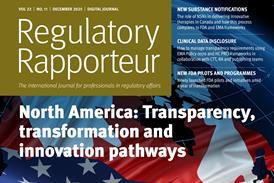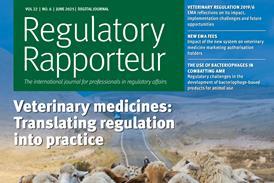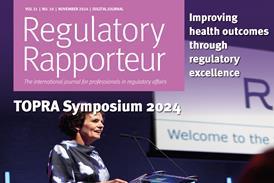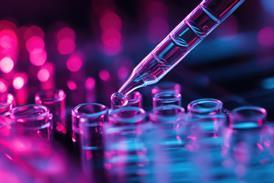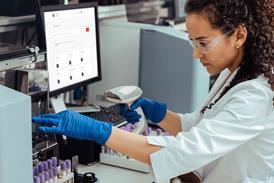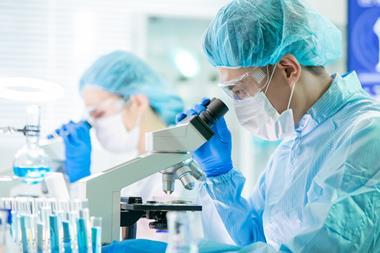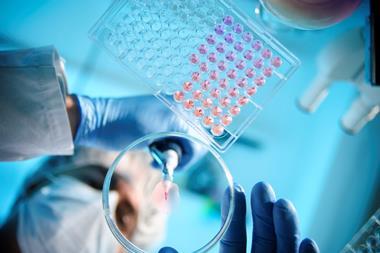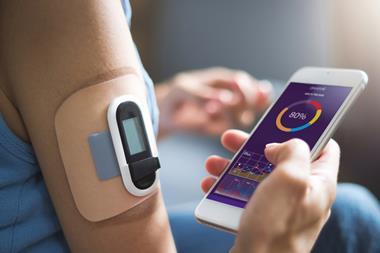Advanced therapy medicinal products (ATMPs) are biological products which comprise a diverse group of medicinal products that are often complex and diverse in nature. As these products are regularly developed for diseases of high unmet need, the requirements for evidence generation to support marketing authorisation often require innovative development plans. Within this continuing professional development supplement we investigate the regulation of ATMPs in the EU and US.

The first ATMP product approved in the EU came in 2009 with the authorisation of ChondroCelect®, a tissue-engineered product indicated for the treatment of cartilage defects; in the US the first approved ATMP was approved in 2010 (PROVENGE®, a somatic cell therapy for the treatment of some prostate cancers[1] ).
Regulation of ATMPs
In the EU, Regulation (EC) No 1394/2007 (‘ATMP Regulation’)[2] provides the overall framework on ATMPs in the EU/EEA. The regulation established the Committee for Advanced Therapies (CAT), tasked with the responsibility to assess the quality, safety and efficacy of ATMPs and to provide scientific recommendations on ATMP classification. The ATMP Regulation amended the Medicines Directive 2001/83/EC[3] and Regulation 726/2004 on the procedures for authorisation of medicines under the centralised procedure[4] (CeP) and establishment of the European Medicines Agency (EMA).
Applicants must submit a marketing authorisation application (MAA) under the CeP to the EMA to obtain a marketing authorisation (MA) (under so-called mandatory scope); scientific assessment of applications is performed by the CAT and opinions on awarding a MAA are made by the Committee for Medicinal Products for Human Use (CHMP). More recently, Directive 2009/120/EC amended the Medicines Directive to provide updated definitions and detailed scientific and technical requirements for ATMPs, including ATMPs containing devices and combined ATMPs.
In the US, the FDA Center for Biologics Evaluation and Research (CBER) is one centre within the FDA whose mission it is to protect and enhance the public health through the regulation of biological and related products including blood, vaccines, allergenics, tissues, and cellular and gene therapies (ATMPs). The Office of Tissues and Advanced Therapies (OTAT) regulates ATMPs, as well as therapeutic vaccines for various disease indications.
The determination of whether a product will be regulated as a biologic, device, “human cell, tissue, and cellular and tissue-based product” (HCT/P), and/or combination product can be challenging. The US federal regulatory framework consists of two main statutes, Federal Food, Drug, and Cosmetic Act (FDCA) and the Public Health Services Act (PHSA), which provide the FDA with the legal basis to regulate medicinal products. In the US, like in the EU, ATMPs (known as cellular and gene therapy products [CGTs]) are regulated as biologic products according to Section 351 of the PHSA. Applicants must submit a biologics license application (BLA) to obtain marketing authorisation. Advanced therapies should not be confused with other legislative category of products called HCT/Ps and defined as “articles containing or consisting of human cells or tissues intended for implantation, transplantation, infusion, or transfer into a human recipient” and are not considered to be medicinal products.
TABLE 1 Classification criteria of cell/gene therapies in the EU and US (adapted from Iglesias-López et al, 2019)[5]
| Definition | Purpose | Examples | Exclusions | |
|---|---|---|---|---|
| Gene therapy | ||||
| Gene therapy medicinal products (GTMPs) (EU) | Recombinant nucleic acid of biological origin. | Administered to human beings with a view to regulating, repairing, replacing, adding or deleting a genetic sequence. Therapeutic, prophylactic, or diagnostic effects that relate directly to the recombinant nucleic acid sequence it contains, or to the product of genetic expression of this sequence. |
|
Non-biological products (eg, chemical synthesised nucleic acids) Products/vaccines that are destined for the treatment or prophylaxis of infectious diseases. |
| Human gene therapy (US) | Administration of genetic material to modify or manipulate the expression of a gene product, or to alter the biological properties of living cells for therapeutic use. | Prevention, treatment or cure of a disease, or condition of human beings. | ||
| Cell Therapy | ||||
| Tissue-engineered products (EU) | Cells or tissues that have been subject to substantial manipulation or not intended to be used for the same essential function(s) in the recipient and the donor. The cells or tissues may be viable or non-viable. | Regenerating, repairing or replacing a human tissue. |
|
Products containing or consisting exclusively of non-viable cells/ tissues and which do not act principally by pharmacological, immunological, or metabolic actions. |
| Somatic cell therapy medicinal products (EU) | Cells or tissues that have been subject to substantial manipulation or not intended to be used in the same essential function(s) in the recipient and the donor. | Treating, preventing or diagnosing a disease through the pharmacological, immunological or metabolic actions of its cells or tissues. |
|
Products containing or consisting exclusively of non-viable cells/ tissues and which do not act principally by pharmacological, immunological, or metabolic actions. |
| Somatic cell therapy (US) | Autologous, allogeneic, or xenogeneic cells that have been propagated, expanded, selected, pharmacologically treated, or otherwise altered in biological characteristics ex vivo. | Therapeutic, diagnostic or preventive purposes. |
|
Human cells, tissues, and cellular and tissue-based products (HCT/Ps) under section 361 of the Public Health Service Act (ie, unmodified, unmanipulated cells/tissues intended for same essential function). |
| Combination Products | ||||
| Combined ATMPs (EU) | Combines: One or more medical devices within the meaning of or one or more active implantable medical devices, and Its cellular or tissue part must contain viable cells or tissues, or Its cellular or tissue part containing non-viable cells or tissues must be liable to act upon the body with action that can be considered as primary to that of the devices referred to. |
|
Human fibroblasts cultured onto a biodegradable collagen matrix. The matrix is an integral part of the product and it fulfils its function as a CE marked medical device when administered to patients. | Human endothelial cells cultured in a gelatin matrix and used to treat vascular injury. The gelatin matrix is a CE marked medical device but used as a component of the product and not its intended use as a medical device. |
| Combination products (US) | Two or more regulated components (ie, drug, device, biologic, as a single entity or packaged together, packaged separately but intended for use only with an approved individually specified drug, device or biological product, where both are required to achieve the intended use, indication or effect. |
|
|
ATMP delivered by a specific route of administration but not using a specific device for delivery (eg, subretinal delivery of a gene therapy by a subretinal injection cannula of defined proportions and performance). |
Classification
The categories for ATMP classification in the EU and US are summarised Table 1.5 Despite the different terminology used, the inclusion criteria that define a gene therapy medicinal product are broadly equivalent in both regions, where the addition of recombinant nucleic acids (“genetic material” in the US) provides the products’ primary effect through the addition, manipulation or modification of gene expression. Gene therapies can consist of genetically modified cells or tissues, as well as viral vectors and nucleic acids. Unlike the US, in the EU, one of the inclusion criteria for gene therapy medicinal products (GTMPs) establishes that the recombinant nucleic acids should be of biological origin; however, vaccines are excluded. With respect to products based on cells and tissues, the EU defines them as somatic cell therapy products (SCTPs) and tissue engineered products (TEPs). Classification as a SCTP is made when the product is administered to human beings with a view to treating, preventing, or diagnosing a disease through the pharmacological, immunological, or metabolic actions of its cells or tissues, whereas in the case of TEPs, the product is designed to regenerate, repair or replace human tissue. If a product falls under both definitions it is classified as a TEP. Similarly, if a product falls under both gene and cell/tissue definitions, the product is considered a GTMP. In the US, cell and tissue products are either biologic products (ie, medicines) or HCT/Ps. As such, unlike in the EU, there is no delineation between SCTP and TEP biologic products in the US.
In the EU, there is a specific category for those products that consist in an ATMP combined with a medical device (eg, scaffolds, matrices, and encapsulation systems for cells, such as microspheres, among others). The criteria associated with this category class are that the product must incorporate, as an integral part of the product, one or more medical devices. Whereas ATMPs can be approved as combination products in the US, there is no distinct legal definition of an ATMP combined with a device.
To ensure ATMPs are correctly classified, both the EMA and FDA offer scientific advice to applicants during development. Classification is particularly useful for “borderline” products or those with unique features.
Expedited pathways in the EU and US
For further procedural details please refer to the Regulatory Rapporteur October 2020 CPD Supplement[6] on accelerated approvals and expedited pathways. In the EU there are three expedited pathways available: accelerated assessment, conditional marketing authorisation and authorisation under exceptional circumstances, in addition to the priority medicines (PRIME) scheme which ATMP developers can exploit.
The first ATMP containing stem cells approved in the EU, Holoclar, was awarded a conditional MA in 2015, while the first GTMP approved in the EU, Glybera, was approved under exceptional circumstances. As of 1 April 2020, 24 ATMPs had been awarded PRIME designation; of these, 21 are GTMPs and nine of the applicants were classified as small and medium-sized enterprises (SMEs).[7]
Likewise, the FDA has created several pathways that could expedite the approval processes, including priority review, breakthrough therapy, accelerated approval, fast track and regenerative medicine advanced therapy designation (RMAT)[8].,[9] All of these designations are open to all drugs and biologics except for RMAT, which was specifically created for ATMPs. In 2017, the FDA introduced the new RMAT designation in the 21st Century Cures Act, recognising the potential of ATMPs and the need for efficient regulatory tools to accelerate their development. RMAT is unique in that it applies only to cell and gene therapies; however, the qualifications and benefits are similar to older regulatory tools. To qualify for RMAT, a product must be intended to treat or cure serious, life-threatening conditions where preliminary clinical evidence indicates the drug has the potential to address unmet medical needs. The benefits or RMAT include increased interactions with FDA reviewers similar to breakthrough therapy designation, as well as eligibility for priority review and accelerated approval. In addition, “flexibility” is theoretically available in the number of clinical sites used and the possibility to use patient registry data and other sources of real-world evidence for post-approval studies.
To further support the development of ATMPs, both the EMA[10] and FDA[11] have issued guidance documents covering chemistry, manufacturing and controls (CMC), nonclinical and clinical aspects of development of cell therapies and tissue engineered products, gene therapies, and gene-modified cell therapy. In Europe, specific guidance documents describing the application of good clinical practice and good manufacturing practice for ATMPs have also been developed. The FDA has also published product-specific guidance to support the development of ATMPs for the treatment of haemophilia, retinal disease and rare disease.
Clinical trial ATMP complexities
In relation to clinical trials, ATMPs have specific requirements in terms of both genetically modified organisms (GMOs) and also donation, procurement and traceability:
GMOs
In the EU, there are two approaches that sponsors must consider for the inclusion of GMOs in clinical trials, termed “deliberate release” and “contained release”, the use of which is dependent on the EU member state for which the clinical trial application (CTA) is submitted and the containment measures employed for the GMO.
Contained use, as defined under Directive 2009/41/EC, is defined as “any activity for which specific containment measures are used to limit their contact with, and to provide a high level of safety for, the general population and the environment”. Contained use procedures are classified by increasing risk (class 1–4) based on data presented in the risk assessment, with class 3 and 4 GMOs requiring further approvals from competent authorities and/or clinical site-specific notifications. If the GMO is classified as contained use, sponsors must obtain biosafety approvals for the clinical sites, which is considered an extra hurdle to the CTA process.
Deliberate release, defined under Directive 2001/18/ EC, is considered “any intentional introduction into the environment of a GMO or a combination of GMOs for which no specific containment measures are used to limit their contact with and to provide a high level of safety for the general population and the environment”. An environmental risk assessment is conducted and a dossier in the summary notification information format (SNIF) is required to be included in a publicly available GMO register of the Joint Research Centre of the EU Commission.
Efforts to harmonise the GMO requirements in the EU are ongoing. An EU working group has been established and recently reached consensus on common application requirements for human cells genetically modified by means of retro/lentiviral vectors and in vivo gene therapies.
In the US, as of April 2019, the FDA has primary responsibility for the review of protocols for trials containing GMOs, with oversight provided from the National Institutes of Health (NIH) for gene therapy research. At a local level, oversight is provided by Institutional Review Boards (IRBs) and Institutional Biosafety Committees (IBCs), responsible for monitoring activities involving biohazardous materials as required by the NIH Guidelines. IBCs are involved in the evaluation of the trial sites’ capability for safe storage, handling, administration, and disposal and shedding of gene-modified, biohazardous materials. Sponsors should also consider that, in addition to IRB/ EC approval, IBC approval must be attained ahead of patient enrolment.
Donation, procurement and traceability
In the EU, the legal framework defining the safety and quality standards for tissues and cells included in the donation process is set out in the European Union Tissue and Cells Directives (EUTCD), which comprises the parent Directive 2004/23/EC and twotechnical directives, 2006/17/EC[12] and 2006/86/EC.[13] While the EUTCD outlines the compulsory quality and safety standards, each individual EU member state is permitted to maintain or introduce more stringent protective measures as deemed appropriate. In the US, the legislation governing the donation and procurement of human tissues is the Good Tissue Practices (GTP) 21 CFR 1271 (Human Cells, Tissues, and Cellular and Tissue-Based Products).[14]
A robust quality system should be in place at all facilities where donation procedures are executed. All aspects of GCP should be followed where they relate to donation, including donor consent, ethics and provision of a full protocol (including inclusion and exclusion criteria, mandatory screening and donor history). Donation should be unpaid and donor consent should be explicit. The future potential use of the harvested tissue and the nature of any analytical tests to be performed should be explained to each donor. Moreover, a system for notification of adverse events and reactions related to procurement should be in place.
Following donation, procedures should be in place for, but should not be limited to:
- Manipulation and handling methodologies for donated material
- Storage facilities for material following removal
- Transportation methods to enable transfer of the material to other establishments
- Waste tissue disposal system Labelling and tracking system to enable traceability
Traceability records should be maintained for a minimum of 10 years in the US, following use, expiry or disposal. This requirement differs in the EU, where the minimum term that records should be maintained is 30 years following use, expiry or disposal. In addition, all donated tissues and cells in the EU require an anonymised coding system to ensure traceability from donor to recipient(s), in line with Article 9 of 2006/86/EC.
Specific CMC requirements for ATMPs
ATMPs comprise a highly diverse repertoire of products, ranging from viral vectors manufactured using defined upstream and downstream manufacturing similar to traditional biopharma processes, through to expanded autologous and allogeneic cell or gene-modified cell therapies. TEPs represent the most biologically and technologically complex, particularly with respect to how they are derived and manufactured.
For example, ex vivo gene-modified cell therapy manufacturing may involve multiple steps to select, activate and expand cells, manufacture a viral vector, transduce cells and further expand before formulation, fill/finish and cryopreservation. Manufacturing processes are often highly adapted to specific products. To support developers, specialised equipment and techniques have been developed for certain process steps, for instance the optimisation of cellular isolation/harvesting from complex starting materials (eg, tissue, apheresis material or blood).
The diversity and complexity of ATMPs also pose challenges to the manufacturing process control strategy, product characterisation and routine release testing. For instance, unlike for new chemical entities or traditional biopharmaceutical products, there are few industry standards or reference materials. Manufacturing processes are often highly adapted or, in the case of autologous products, often have a high degree of lot-to-lot (ie, patient to patient) variability, driven by both process capability and the quality of the input starting material(s).
Both the EMA and FDA have issued guidance documents to support CMC development of ATMPs. The need for a specialised approach to CMC development is recognised in both jurisdictions, where a case-by-case approach is applied to any given CMC strategy, taking into account scientific understanding, prior knowledge, regulatory precedent and most importantly, a phasebased approach to CMC development. In the US, investigational products used in Phase I clinical trials are exempt from complying with the cGMP regulations in 21 CFR parts 210/211 applicable to commercial manufacture. Rather, the requirements for cGMPs in the FD&C Act apply, and the FDA has provided guidance on how manufacturers of early-phase products can comply with these requirements[15]. In the EU, EudraLex Volume 4 Guideline on Good Manufacturing Practice specific to Advanced Therapy Medicinal Products came into operation in 2017 and applies to investigational as well as commercial ATMPs.[16] As with traditional drugs and biologics, Annex 13 of EudraLex Volume 4 concerning investigational medicinal products also applies.
Although there is considerable flexibility in CMC regulatory requirements for ATMPs, regulatory requirements increase in a stepwise fashion and become progressively more stringent as a product development programme advances toward marketing. Early-phase CMC development puts an emphasis on ensuring product safety has been adequately characterised, including the justification that product used in pivotal pharm-tox studies can be considered representative of early phase clinical material. A heavy focus is put on raw and starting materials to ensure adequate quality and safety of process inputs, particularly when manufacturing processes are not well characterised. For instance, stringent requirements are placed on donor testing and procurement for allogeneic ATMPs containing cells to ensure starting materials are free from adventitious agents (eg, viral infection). Later in development, the emphasis switches to ensuring manufacturing process robustness and analytical method quality, the latter including the development of potency assay(s) which are relevant to the ATMPs mechanism of action and which should ideally correlate with the expected clinical response. Increased product and process knowledge enables the development and execution of process and analytical method validations to support MAA/BLA.
Specific nonclinical requirements for ATMPs
Nonclinical data generated for an ATMP should provide sufficient basis to estimate a safe and biologically effective stating clinical dose, support the selection of the route of administration, identify potential safety concerns and target organ toxicities, and inform the safety measures to be implemented in initial clinical trials. Although these objectives of nonclinical development are shared with traditional medicinal products, the nonclinical development pathway for ATMPs may differ significantly with respect to timing of studies (which in the majority are concluded before clinical development commences) and the types of studies that are conducted. A risk-based approach is recommended, which considers the key risks associated with the product type/target under investigation and leverages the existing clinical/nonclinical evidence with similar products to focus and tailor the nonclinical development package.
A key consideration in design of the nonclinical development programme is the relevance of animal models. As the majority of ATMPs are specific for human activity, and testing can be impaired by immune responses against foreign cells/vectors/expressed transgenes resulting in the rapid elimination of the administered products, sponsors should consider using homologous animal models where feasible, immunocompromised animal models, or transgenic disease models. The sponsor should outline the clinical relevance of the reported findings and the predictability of nonclinical data, particularly where a homologous product is used.
The pharmacology package should provide rationale for potential effect in the intended disease or condition, using relevant disease models (if available). The dose levels selected should ideally allow for estimation of the biologically effective dose and extrapolation to the clinical starting dose. For gene therapies, evidence of transduction, transgene expression (and its duration) should be provided.
For ATMPs, traditional pharmacokinetics studies are typically not relevant. Instead, biodistribution studies are generally required to provide data on the distribution, migration, and persistence of cells, if the administration route may potentially afford systemic exposure. Equally, for gene therapies, the distribution profile of the vector (including evaluation of risk of germline transmission) and expressed transgene should be provided before clinical development commences; in some cases, the risk of viral/vector shedding (ie, excretion/secretion of virus in bodily fluids after administration) may need to be assessed in the nonclinical development programme. In all cases, the administration of the product in biodistribution studies should mimic the intended clinical dosing as closely as feasible.
Nonclinical safety and biodistribution endpoints can often be incorporated into a single study. Additional safety assessments for ATMPs may include evaluation of potential for insertional mutagenesis (for integrating vectors), tumourigenicity, and potential immunogenicity/immunotoxicity. Finally, although pivotal nonclinical safety studies are typically required to be performed in accordance with good laboratory practice, feasibility may preclude meeting this expectation; sponsors should justify the reliability of data generated and make demonstrable efforts to ensure data integrity.
Specific ATMP clinical development requirements
There are a number of challenges faced by ATMP developers in clinical development, necessitating a non-standard approach tailored to the specific product under investigation. These challenges can arise from the complexity of the products and their manufacturing process, limitations in ability to extrapolate from animal data, and uncertainty about persistence of effect and immunogenicity, among others.
Clinical dose finding can be particularly challenging with often limited pharmacokinetic/pharmacodynamic (PK/PD) data to inform optimal selection of an efficacious dose range. Administration of the product may be complex, from preparation of the product at the point of use (eg, thawing and dilution) and administration via devices and/or in potentially invasive surgical settings, each associated with their own risks. Furthermore, while the gold standard for demonstration of efficacy and safety in development of traditional medicinal products is the conduct of randomised double blind, controlled clinical trials, these may not be feasible or ethical in the context of ATMP development. Alternative approaches such as the use of historical control groups, although not preferred in regulatory applications, are more commonly seen in ATMP development given that an appropriate comparator can often not be identified for a blinded study.
In PK/PD studies where conventional ADME (absorption, distribution, metabolism and excretion) studies are not generally feasible, aspects such as viability, proliferation/differentiation, tumourigenicity, immunogenicity, distribution, ectopic foci, tissue tropism/migration, functionality and transgene expression should be monitored, as appropriate for product class. PD endpoints should be selected to substantiate proof of concept, based on the intended mode of action (eg, transgene function for gene therapy, immune responses for cell therapy etc).
Although clinical efficacy studies should be guided by the indication of interest and relevant guidance/ precedents, conventional endpoints may need to be adapted to account for the nature of the intended action and potential long-term duration of effect/benefit. Use of surrogate or non-validated endpoints in pivotal clinical studies should be pre-agreed with regulatory authorities prior to implementation, and clinical utility validated in prospective clinical trials prior to confirmatory studies.
Safety risks specifically associated with ATMPs include adverse immune reactions (ie, to product/ expressed transgene), susceptibility to infections, ectopic tissue formation, risk of germline transmission and shedding, and potential malignant transformation. Long-term follow-up measures for signal detection and risk mitigation should be implemented as appropriate for the class of product.
From an operational perspective, sponsors should review local regulatory requirements and identify regional regulatory requirements for ATMPs or whether there are additional requirements for GMOs/viral vectors, early in clinical development to avoid potential delays to commencement of studies.
Conclusion
ATMPs represent a class of medicines with enormous promise and huge diversity. The potential for achieving high degrees of efficacy – in some cases curative treatment – for diseases which have proven to be difficult to treat, warrants the level of scientific interest and financial investment in recent years. The potential of ATMPs is reflected by the creation of a regulatory framework in the US and EU focused on incentives to streamline development. Regulators have published a variety of guidance documents to support the development of ATMPs. However, the wide variety of product types and rapidly evolving science and technology is a challenge. Ultimately, the CMC, nonclinical and clinical development requirements should be considered on a case-by-case basis and frequent interactions with regulators to discuss these requirements is encouraged.
[1] REGULATION (EC) No 1394/2007 OF THE EUROPEAN PARLIAMENT AND OF THE COUNCIL of 13 November 2007 on advanced therapy medicinal products and amending Directive 2001/83/EC and Regulation (EC) No 726/2004. Available at: https://eur-lex.europa.eu/LexUriServ/LexUriServ. do?uri=OJ:L:2007:324:0121:0137:en:PDF (accessed 18 December 2020).
[2] FDA. Provenge (sipuleucel-T). Available at: https://www.fda. gov/vaccines-blood-biologics/cellular-gene-therapy-products/ provenge-sipuleucel-t (accessed 18 December 2020).
[3] DIRECTIVE 2001/83/EC OF THE EUROPEAN PARLIAMENT AND OF THE COUNCIL of 6 November 2001 on the Community code relating to medicinal products for human use. Available at: https://eur-lex.europa.eu/legal-content/en/ ALL/?uri=CELEX%3A32001L0083 (accessed 18 December 2020)
[4] Regulation (EC) No 726/2004 of the European Parliament and of the Council of 31 March 2004 laying down Community procedures for the authorisation and supervision of medicinal products for human and veterinary use and establishing a European Medicines Agency. Available at: https://eur-lex. europa.eu/legal-content/EN/TXT/?uri=CELEX%3A32004R0726 (accessed 18 December 2020).
[5] Iglesias-López C, Agustí A, Obach,M et al. Regulatory framework for advanced therapy medicinal products in Europe and United States. Frontiers in pharmacology 30 August 2019. Available at: https://www.frontiersin.org/articles/10.3389/fphar.2019.00921/ full (accessed 18 December 2020).
[6] Bloom A, Thomas N et al. Expedited drug development regulatory pathways in the EU and the US. Regulatory Rapporteur October 2020.
[7] EMA. Monthly PRIME publications. Available at: https://www. ema.europa.eu/documents/report/list-products-grantedeligibility-prime_en-0.xlsx (accessed 18 December 2020).
[8] FDA. Guidance: expedited programs for serious conditions – drugs and biologics. Available at: https://www.fda.gov/ regulatory-information/search-fda-guidance-documents/ expedited-programs-serious-conditions-drugs-and-biologics (accessed 18 December 2020).
[9] FDA. Guidance: expedited programs for regenerative medicine therapies for serious conditions. Available at: https://www.fda. gov/regulatory-information/search-fda-guidance-documents/ expedited-programs-regenerative-medicine-therapies-seriousconditions (accessed 18 December 2020).
[10] EMA. Guidelines relevant for advanced therapy medicinal products. Available at: https://www.ema.europa.eu/en/ human-regulatory/research-development/advanced-therapies/ guidelines-relevant-advanced-therapy-medicinal-products (accessed 18 December 2020).
[11] FDA. Cellular and gene therapy guidances. Available at: https:// www.fda.gov/vaccines-blood-biologics/biologics-guidances/ cellular-gene-therapy-guidances (accessed 18 December 2020).
[12] Commission Directive 2006/17/EC of 8 February 2006 implementing Directive 2004/23/EC of the European Parliament and of the Council as regards certain technical requirements for the donation, procurement and testing of human tissues and cells. Available at: https://eur-lex.europa.eu/LexUriServ/ LexUriServ.do?uri=OJ:L:2006:038:0040:0052:EN:PDF (accessed 18 December 2020).
[13] Commission Directive 2006/86/EC of 24 October 2006 implementing Directive 2004/23/EC of the European Parliament and of the Council as regards traceability requirements, notification of serious adverse reactions and events and certain technical requirements for the coding, processing, preservation, storage and distribution of human tissues and cells. Available at: https://eur-lex.europa.eu/LexUriServ/ LexUriServ.do?uri=OJ:L:2006:294:0032:0050:EN:PDF (accessed 18 December 2020).
[14] FDA. CFR - Code of Federal Regulations Title 21. Available at: https://www.accessdata.fda.gov/scripts/cdrh/cfdocs/cfcfr/ CFRSearch.cfm?CFRPart=1271 (accessed 18 December 2020).
[15] FDA. Guidance for industry: CGMP for Phase 1 investigational drugs, July 2008. Available at: https://www.fda.gov/ media/70975/download (accessed 18 December 2020).
[16] EMA. EudraLex: the rules governing medicinal products in the European Union, Volume 4. Good manufacturing practice – guidelines on good manufacturing practice specific to advanced therapy medicinal products. Available at: https:// ec.europa.eu/health/documents/eudralex/vol-4_en (accessed 18 December 2020).



